Magic (1978)
Directed by: Richard Attenborough
Written by: William Goldman
Starring: Ann-Margret, Anthony Hopkins, Burgess Meredith, Ed Lauter
USA
AVAILABLE ON BLU-RAY: 23RD MARCH, from SECOND SIGHT
RUNNING TIME: 107 mins
REVIEWED BY: Dr Lenera, Official HCF Critic
After Charles “Corky” Withers fails in his first attempt at professional magic, his mentor “Merlin” says that he needs to have a better show business gimmick. Corky comes back as a combination magician and ventriloquist with a foul-mouthed dummy named Fats, and within a year is a huge success. Corky’s agent, Ben Greene, wants to sign him for his own TV show, but Corky doesn’t want to take the network’s required medical examination because doctors might find out that he suffers from severe mental issues, and that even off-stage he can’t control Fats. Corky then reunites with his high-school crush, Peggy Ann Snow, but Fats is a jealous sort.…
I was both looking forward to and getting a bit apprehensive about watching Magic again on Second Sight’s new Blu-ray. I’ve said in other reviews that dolls make me uneasy, but ventriloquism totally unsettles me, even when I notice the person moving his or her mouth as he or she voices the dummy. There’s just something genuinely freaky about it which makes it somewhat surprising that not that many films have tried to exploit this – yes, we’ve all probably seen Dead Silence, many of us have probably seen Devil Doll, and a few of us have probably unfortunately seen Triloquist, but compared to the huge amount of movies featuring evil dolls without the ventriloquism angle, they’re quite thin on the ground. The grand-daddy of course is that segment from the 1946 portmanteau horror classic Dead Of Night and it’s still frightening, along with an incredible performance by Michael Redgrave. You could say that Magic is basically a feature-length extension of that, and you’d probably be right. You could, with some justification, also say that it’s a prime example of the prestigious, ‘respectable’, big studio horror movie, a film which its makers probably don’t even call a horror movie, at least when they’re out in public. It’s pretty obvious from watching the film that, even if you didn’t know it, it was just a job for director Richard Attenborough who never made this kind of thing again. Fortunately though, many others involved clearly didn’t take it as just a job and put in their all, resulting in a movie that, while it’s certainly not a full-on fright fest, is a compelling psychological effort rich in characterisation and detail, with a very fine turn by its star nearly a decade and a half before he terrified the world as Hannibal Lector.
William Goldman’s first draft was written for Norman Jewison, who wanted Jack Nicholson to star as Corky, but Nicholson turned it down, claiming he didn’t want to wear a hairpiece, then Jewisom bailed after a row with producer Joseph E. Levine. Steven Spielberg expressed interest in directing the film and considered casting Robert De Niro. Richard Attenborough, who had just made A Bridge Too Far with Goldman and producer Levine, then agreed to direct so he could finance his pet project Gandhi, and suggested Gene Wilder. Goldman also wanted him, but Levine refused, wanting no comedians in the movie. Many years after its release, Wilder was asked at a book signing in New York City what role he wished he had gotten to play, and he said Corky. Laurence Olivier was originally offered the role of the agent Ben Greene but fell ill so Burgess Meredith was cast instead, modelling his performance on the real-life agent Swifty Lazar, even shaving his head to look like Lazar. Upon seeing Fats for the first time, Hopkins was allowed to take the doll home to work with it, but he wound up being so unnerved by it that he called the film’s consulting ventriloquist in the middle of the night, threatening to throw Fats into the canyon by his house if someone didn’t come and get the doll immediately. Attenborough ended up going to Hopkins’ house to calm him down. Exteriors were shot in Ukiah, California, while the sets in Hollywood were closed to preserve the secrets of the plot. After its trailer was removed from TV after complaints it was too scary, Magic was a minor success, but, because 20th Century Fox never owned complete rights, other companies released home video versions of it under different licenses, often of poor quality and cut. Due in part to Embassy Pictures’ corporate holdings being divided among different entities, it was then not being formally reissued on VHS and DVD for some time.
The film begins with a really lengthy pan around the apartment in which Merlin [the magician] lives, revealing his life and life style through posters, flyers, kitchen stuff etc., though you don’t get any other stuff like this later. His protegee Corky comes in to tell him of his successful debut performance but flashback evidence tells us that it was a disaster, despite one woman in the audience laughing [but is she laughing with him or at him?] and another whose boyfriend’s attentions fail to stop her from being oddly transfixed by this rather pathetic figure. Of course Merlin sees through his lying, after which the film does something which the first time I saw it I thought was a big mistake; it jumps forward a year to a time when Corky has become a big success. Surely it would have been better to see Corky’s first encounters with Fats and see how this changes things? But the intention was to clearly show the contrast between Corky without the doll and Corky with the doll, and the first time Fats is revealed, as a rowdy but unseen member of the audience questioning Corky’s card trickery, is very memorable. Fats is lewd and crude and an immediate hit, and Corky’s agent Ben is on the verge of signing him for his own television show. There’s a nice bit just before the confirmation meeting when Corky sees Ben arrive but hides behind a pillar and waits until he’s gone inside and sat down in the restaurant before he decides to make an appearance there himself. I found it both poignant and well observed because when I was much younger I was extremely shy and insecure and would do something similar if I was attending social gatherings – hang around hidden outside until I’d seen somebody I knew go in. But Corky doesn’t want his mental issues to be found out so he turns it down, though Ben thinks that the problem is just that he wants success but is afraid of it.
Corky decides to retreat to his home town – cue some more very melancholy flashbacks – and it’s interesting that from now on the film becomes very small in scope, with only four characters and everything taking place in and around a large lakeside house. It’s also very slow, and some viewers may be shuffling in their seats. There’s no doubt that could easily trim the film down by 25 minutes or so and lose none of the story, but on the other hand you really feel that you get to know these people and develop a great deal of empathy for Corky. He stays at the house of Peggy, a girl he was in love with at school, and things soon heat up between them partly due to Fats, but she’s stuck in a passionless marriage with Corky’s old friend Duke. We’ve seen countless situations like this in movies, but the acting and lots of nuances in the writing just about keep things fresh. Every now and again a scene will come along which doesn’t play out as expected, such as when Duke takes Corky out fishing because he wants to talk to him. We think it’s going to result in a possibly accidental, possibly not Place In The Sun-like killing on a boat, but instead we get Duke showing his vulnerability and worrying about both his marriage and his business. Some may undoubtedly be disappointed that Fats is off screen quite a bit, but as soon as he mentions to Corky his jealousy over him spending so much time with Peggy, we know that things are eventually going to go wrong. One killing is quite unique, with Fats being used to bash the victim repeatedly to death, and is soon followed by a decent shock when Corky tries to hide the body. takes a shine to Fats. But, despite Corky often being shown by a mirror or with his shadow, for the most part Attenborough and Goldman aren’t too interested in horror conventions, focusing more on character and slow-burning drama. There’s one wonderful declaration of love by Corky to Peggy that is one of the sweetest, most honest and most real-sounding that I’ve heard in a movie in a long time, the writing of Goldman at its best.
Fats is both unsettling and a hoot, continually cracking ‘jokes’ like, “when I have a wet dream all I do is wake up with sawdust”. It’s interesting that Peggy immediately likes Fats despite his vulgarity. Ignoring Goldman’s source novel where the supernatural explicitly plays a part, it seems to me that Corky is just schizophrenic, even though it’s possible that the dummy is a tulpa-like imaginary friend or even possessed. Fats’s words to Corky right at the end certainly suggest the first and play out as a sort of revelation for Corky who has gotten progressively more insane, and one shot when Fat’s eyes seem to move of their own accord was actually a mistake which Attenborough opted to leave in the final cut because he liked the way it looked and doubted that many people would actually notice – which is s sure sign to me that he didn’t care nearly as much about this project as he did his worthier efforts, especially as there’s also clearly a shot where Fats’s head moves independently too – honestly, it’s there. In fact there’s even one murder where it looks like Fats is doing most, if not quite all, of the action, which is very confusing indeed, and I wonder if the scene was added at the behest of the studio. Some of the most memorable sequences usually involve dialogue, such as Corky getting Peggy to play a card game which will supposedly prove that actual magic does exist, with Corky getting increasingly agitated and sweaty. And then there’s Ben seeing if Corky can make Fats shut up for five minutes, done in real time, a nice example of low-key suspense, with Corky fine at first, then asking for one of Ben’s cigars [which he keeps in individual glass cases, a good example of the odd details all over this movie] before insulting Ben and then totally giving up half-way through. Attenborough is very smart here: he keeps the camera on Corky with Fats just out of the frame, so that we’re thrown off-balance much like Corky: we want to see Fats, and are waiting for him to speak.
Hopkins’ very nuanced performance, with its slight echoes of Anthony Perkins in Psycho [well, the two characters aren’t that different], means that we’re in the interesting position of sympathising with a killer and hoping he’ll manage to get away with it, because after all, if you look at it one way Fats is the real culprit. But Ann-Margret is also excellent, perhaps the best she’s ever been, looking less deliberately glamorous and more natural than usual as she plays someone wrestling with difficult choices. Burgess Meredith is fine also, initially hammy just like you’d expect but later on restrained as Ben when he needs to be. His scene where he first sees how ill Corky has become is especially well judged, you can really feel the shock and sadness that Ben must feel. The score by Jerry Goldsmith presents a plaintive theme and several other harmonic ideas for Corky, then has them do battle with starker music representing Fats including a harmonica motif. It’s an obvious but effective conceit that leaves surprisingly little room for typical horror film music, though some passages prefigure his score for Alien the following year. Magic never quite becomes as sophisticated as it threatens to – its frequent mentioning of real magic versus trickery doesn’t really amounts to much. But this classy effort still has a lot to recommend it for the patient movie watcher and may very well get under your skin in an almost undetectable fashion. It finishes with a moment which will probably strike most as being just darkly humorous and possibly too frivolous for this particular movie, though I found it incredibly creepy and the first time I saw the film it hit me the way that the ending of the same year’s Invasion Of The Body Snatchers hit most. But then you already know about me and ventriloquism….
Magic has always looked rather drab, with a lot of emphasis on browns and grays, but I did often wonder if that’s how it was intended to look. Dark Sky’s Region ‘A’ Blu-ray apparently continues this, but Second Sight’s Region ‘B’ release is surprisingly vibrant in places, with what bright colours there are really popping out. Grain is evenly managed with no evidence of sharpening, and detail is pretty strong.
Second Sight have ported over all the special features that were on the North American disc. They were also present on some DVD releases too, though to my shame my previous copy was a poor quality public domain one so I hadn’t seen any of them before. Screenwriting for Dummies has Goldman discuss his inspirations for the film including his hanging out at a magician’s bar where they would swap tricks, and how he went with Levine to the house of “a major movie star” who they wanted for the role but Levine being offended about not being offered the star’s joint [!], followed by memories of the shoot, such as how Hopkins would get weaker with each take while with Meredith it was the opposite. After this most fine piece is a 1978 Hopkins interview for Spanish TV which requires the interviewer to translate both his questions and Hopkins’ answers. Hopkins performs a coin trick while discussing the film, primarily what it’s about. Victor Kemper gives a good idea of a cinemtographer’s job as he describes how his challenge on Magic was to craft a change in the photography from “ordinary and pleasant” to eerie and disturbing without calling attention to this, such attention being a sin in Kemper’s opinion. The Anne-Margret make-up test is followed by the especially interesting, if disturbing for someone like me, Fats and Friends, where Dennis Alwood, who acted as consultant to the production, gives us a potted history of ventriloquism with clips including the fascinating but actually unsurprising fact that temporary schizophrenia affects all ventriloquists. He also tells us something of the shoot, like how Hopkins was a brilliant pianist and played between takes, before bringing on Fats himself. And finally, against a background of what appear to be raw dailies from Magic, Hopkins discusses his background and his career up to that point in a brief radio interview. Despite there being no audio commentary, this is a solid selection of extras despite there being nothing new.
Though less a horror film then a psychological drama with horror elements, Magic is a bit of a minor classic really. Second Sight present it in what must be its best home viewing release. Recommended.
SPECIAL FEATURES
*Screenwriting for Dummies: William Goldman interview [16 mins]
*Archive Anthony Hopkins interview [6 mins]
*Victor Kemper: Cinematographer [11 mins]
*Ann-Margret make-up test [1 min]
*Fats and Friends: a history of ventriloquism with the film’s consultant [26 mins]
*Anthony Hopkins archive radio interview [3 mins]
*Trailer, TV Spots, Radio Spots [9 mins]
*English subtitles for the hearing impaired


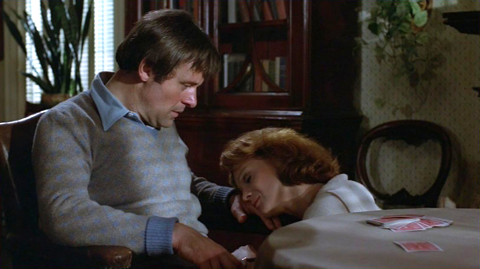
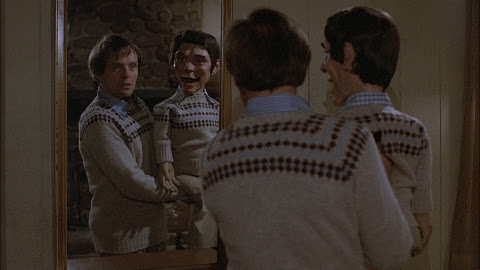



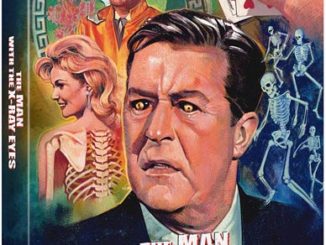
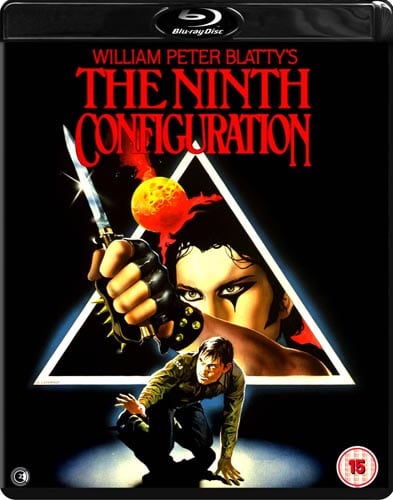
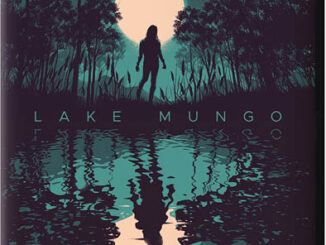
Be the first to comment